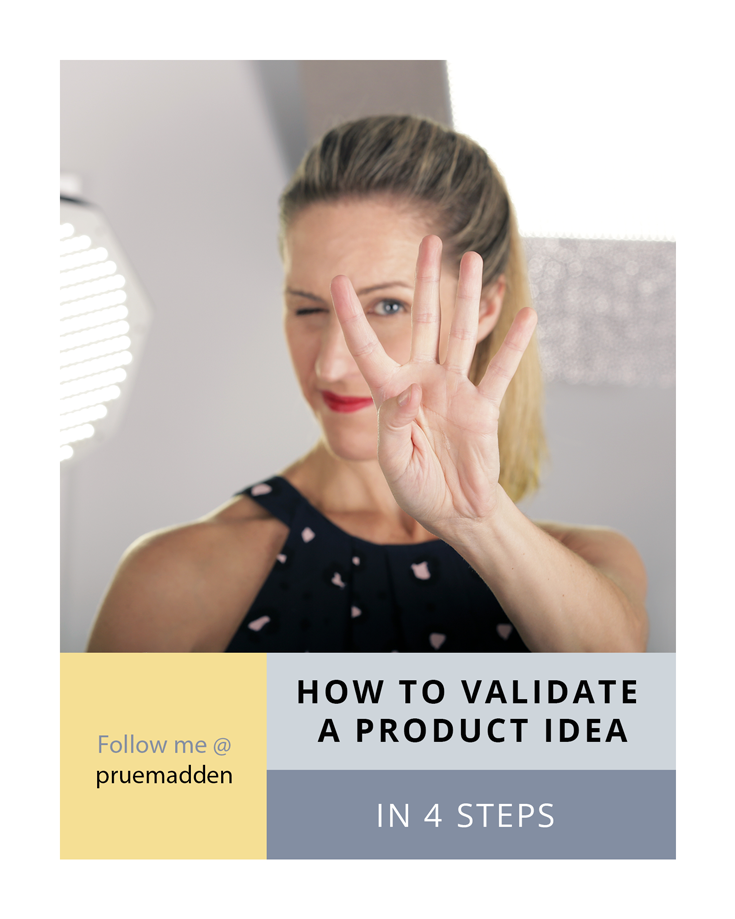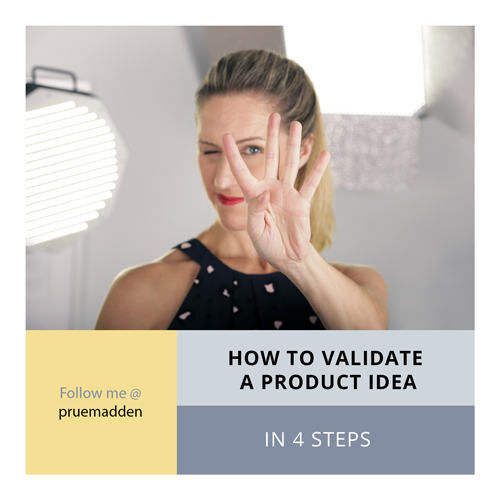One of the most common mistakes made by entrepreneurs, when it comes to new ideas, is failing to validate these ideas, before going in boots-an-all into product creation or product launch. Millions of ideas never go anywhere beyond their initial stage due to the complexity of creating the product and the amount of hard work that is needed for development. Everything that goes into officially launching a product can be intimidating. So what can you do? You can go through an official product validation process.
So why then, do so many people skip the validation stage entirely? For some people, they assume that they understand what the target market needs, for others, they are impatient, and feel that the research stage is a waste of time. For others, they just don’t really understand the importance of market research. And finally, some just don’t know how to go about the idea validation process.
So let’s take a moment to understand why Idea Validation is essential to our success.
In the “olden days”, which I like to call… Pre-Internet, the idea validation process was long and arduous. Nowadays, however, for people like you and me, comparatively speaking, it’s a walk in the park.
Without idea validation, you could pour in tens, or hundreds of hours of blood, sweat and tears, only to launch and hear the sound of crickets. And you’ll likely never know what went wrong. Is it the content? The way you’ve promoted it? Is it too long? Too short? Over-priced? Under-priced?
If you take the time, and effort, to validate your product, you get a sense of what your market wants in terms of topic, content, and form of delivery.
Then, if you’ve validated your product and you launch is not an overwhelming success, at least you can cross your products off the list as the cause. You can then start to examine other aspects of your marketing – your price, where you are marketing it, and the marketing materials you have put together to promote it.
Here are 4 different ways you can go through the product validation process:
1. Be vocal and forthcoming.
It makes sense—you want to protect your idea—so you may be tempted to keep your idea to yourself. However, successful entrepreneurs share their long-term vision. They get out there and discuss their goals. The offshoot of sharing your vision is that it creates a dialogue about what you want. It opens the door to more information, input and suggestions that can help you redefine that all-important vision.
You may like to share your ideas with anyone who will listen, in which case you’ll get some valid, candid feedback, but it is always critical to share your ideas with a few qualified people who can contribute value. These may be people within your target market, or it may just be people who you believe are qualified to make assessments. Someone who does not spend much time online might not be qualified to judge whether you fabulous high tech idea will fly.
The bottom line is the more you talk about your idea, the more you develop it into a truly viable option for successful online delivery. Think of this part of the validation process as like holding surveys. With surveys, it’s always more valuable to get a large group of respondents to share their thoughts.
2. Find established, successful products
So many people get caught up in thinking that they have to create something completely WOW, completely new. Experienced entrepreneurs understand that successful products are a clear indication that there is an audience and the audience is hungry for that product.
But if someone’s already do it before, doesn’t that mean that I should steer clear of it? Isn’t that competition?
I’m not saying here that you should go out and make a carbon copy of the competitor product. All that I’m saying is that someone has already validated the idea for you. Now it’s your opportunity to differentiate the products and make them 100-times better!
The best way to do it is to purchase the competitor product, and watch / read / listen to / use it and think like your target market. How can you improve it? What do you like? What don’t you like? What’s missing?
At the very least if you don’t go ahead and buy a copy, you should carefully study the marketing materials and product description. This should give you some indication for what’s included. And most importantly, read the reviews! Customers will often do the work for you!
3. Basic Viability
MVP is a term in marketing that stands for “minimum viable product”. This is defined as a product with just enough positive attributes to allow you to decide if it is worth marketing or not. The concept is to launch a basic product to the market, and from that starting point develop it for its larger end-state product.
4. The Pre-Sale
So you have your ideas fully developed. Next, you need to see if your idea is valuable enough for people to want to pay money for them.
This is the true test—the product can be excellent, but if people won’t hand over their money, it does you no good. Think of the act of handing over a credit card as the key sign that your product is valuable. Remember that the “BUY NOW” on your website is critical to your success!
Having a great squeeze page that helps to build your mailing list is a great way to gauge general interest. However, it isn’t until you start selling that you truly know whether or not the product is viable.
When you have a solid “warm” list – that is an email list that you have been nurturing, with loads of great free content, or a Facebook group that you tend to with regularity, a presell can be quite straight forward. You already have an open line of communication. They love you (and why wouldn’t they… after all you’ve been showering them in loads of high quality free content?). So just say the word – announce your pre-launch, and you may well see a great response. Many entrepreneurs like to be up front about the nature of the pre-sell, and this is something I would suggest you do too – if you reach a certain level in sales, you will go ahead, but if not, they will refund and abort to project.
So what if you have a tiny list, or none at all? No Facebook group? Less than 100 fans on your Social Media pages?
You’re going to need to pay for your traffic. Facebook Ads is an example of a tool that you can pay to use, to see if your target market are willing to pay you for your product.
You can set up a landing page – as if you product was a real product. Send your Facebook ad traffic directly to the landing page. An alternative to that is promoting a webinar, on the topic. Many people swear by webinars – they often have an insanely high conversion rate –as during the webinar session the audience has a chance to get familiar with you and the product. You build a relationship and prove your worth before pitching your product.
Again, let your audience know that this is a pre-sell, but give them something for being early birds – for example, a high perceived value bonus item.
Kickstarter, and other similar sites, are crowdfunding platforms for entrepreneurs looking to validate products and assess levels on interest. While doing this, they are also increasing their audience and getting exposure for their product or brand.
Essentially, crowdfunding sites are just another channel for presale of your product, with the main difference being that you need to deliver on pledge awards, which are goods or services you have promised to people in accordance with the level pledge the committed to when they backed your idea.
The long and short of it
Going through every product validation method isn’t going to guarantee a successful launch, however it will save you a lot of time and possibly money. Think of how much it takes to bring a product to the internet market. You don’t want to waste time on a product that in the end won’t perform for you. Validation can be the key to being efficient!


